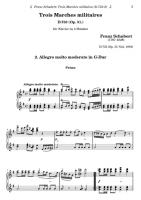

Knabe partnered with Henry Gaehle to form the piano company Knabe & Gaehle, the genesis of Knabe’s storied history. In 1835, William formed his own business of buying, selling and repairing used pianos from inside his home. After immigrating to the United States and settling in Baltimore, Maryland, Knabe began working under Henry Hartye, a well-known piano maker. Knabe learned the art of cabinet and piano making through apprenticeships, dedication and hard work.

If you do some reading on the John Tuttle site provided at the above links you will find a lot of information about players there.Īlso if you email me direct from my web site icon I have some old photos of the Dominion Piano Co band (1884) the Dominion Pavilion at the CNE (1905) and some other interesting history.The Founding FatherKnabe’s rich history began more than 200 years ago when Wilhelm (William) Knabe was born in Kreuzburg, Germany in 1803. Most, if not all, Reproducing rolls were clearly marked with the type of player mechanism they were cut to be used on. If no specific name other than the name of the company, song title and number of the roll are visible, it's a good bet that the player piano is of the Regular variety. Almost all roll makers labeled their boxes for easy identification. Next, look at the rolls (or roll boxes) that are usually played on the unit. Perhaps the easiest way to determine the type of Player Mechanism in any given unit is to look at the fallboard (or key cover) with the keys exposed. Of these, the Reproducing group is sub-divided into three other groups, namely: Duo-Art, AMPICO and Welte-Mignon. There are basically 3 groups of player pianos regular, expression and reproducing. From your photos it looks like you have the solodant feature or auto tracking inside the spool box area can’t see too well from the photos. Here is the Otto Higel Metalnola player action: This is the one found in Heintzman products.Īnd here is the same thing as a wooden structure: This is the one found in the Lackner.Įxactly the same as you have there. The metal strip in the back of the spool box where the roll tab hits on rewind should have a maker on it. These were the two largest Canadian player action makers of that day. These player mechanisms were most likely made in Canada by the Otto Higel Co. This is a Pratt Read style 72 mechanism the only difference being that the PR had a 3 slide motor and the one you have has 5 which would be more efficient when at work. Left click on this link and then left click once on the first photo and that will open up the album. Use the magnifying glass up top to zoom in if you like. The first 3 photos will give you a view of the player mechanism. This is called a Lackner Piano made by the Bell Piano & Organ Co in Guelph. If you left click on this link below that will take you to a photo album of another Canadian made player piano with the identical insert. Some Canadian piano makers like Evans Bros made their own player mechanism which would have been a close copy of same. The identical player mechanism is found in Heintzman products, Doherty, Mason & Risch, and many other Canadian made pianos. That is the usual player insert found in Canadian made pianos.


 0 kommentar(er)
0 kommentar(er)
